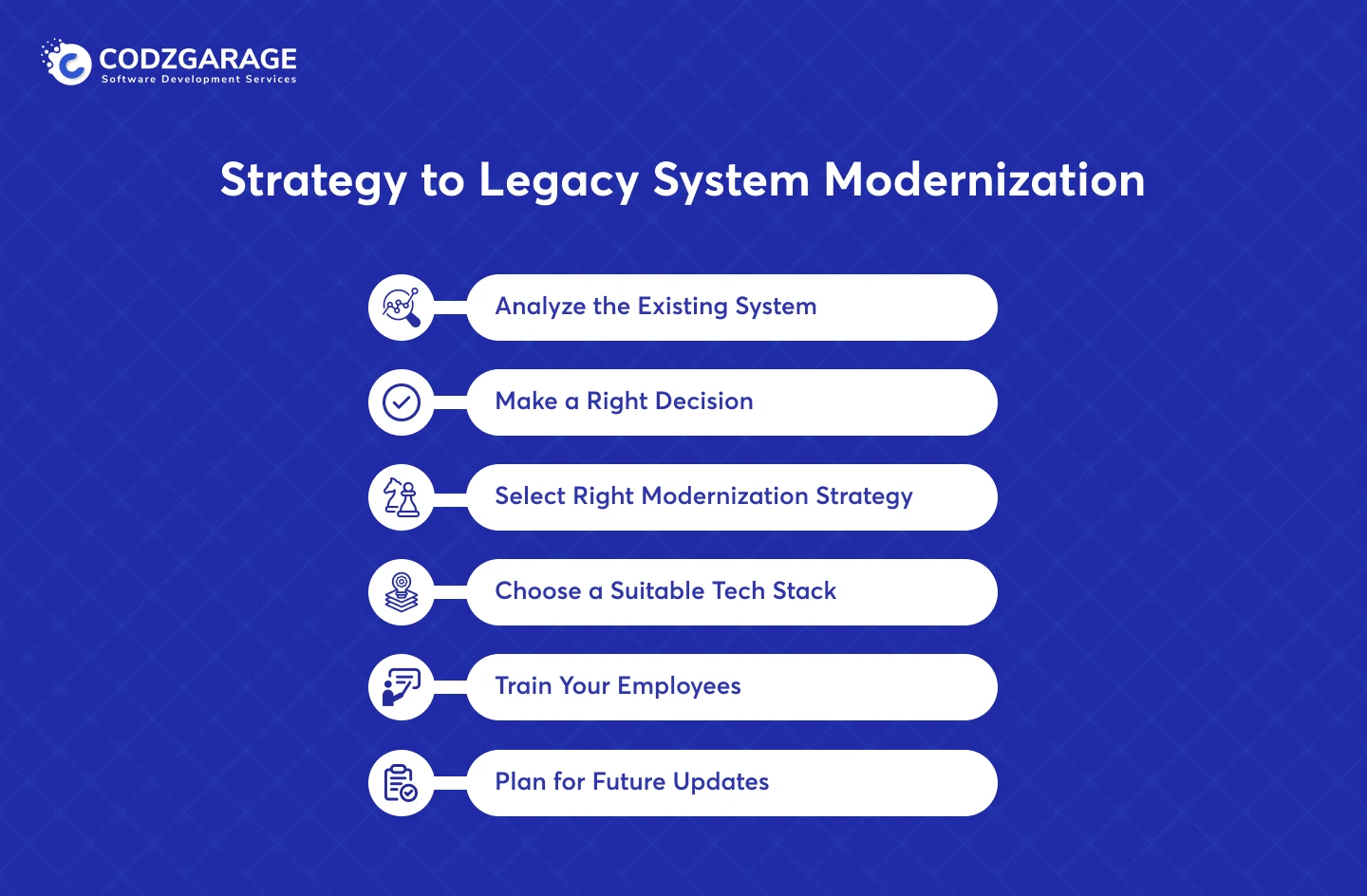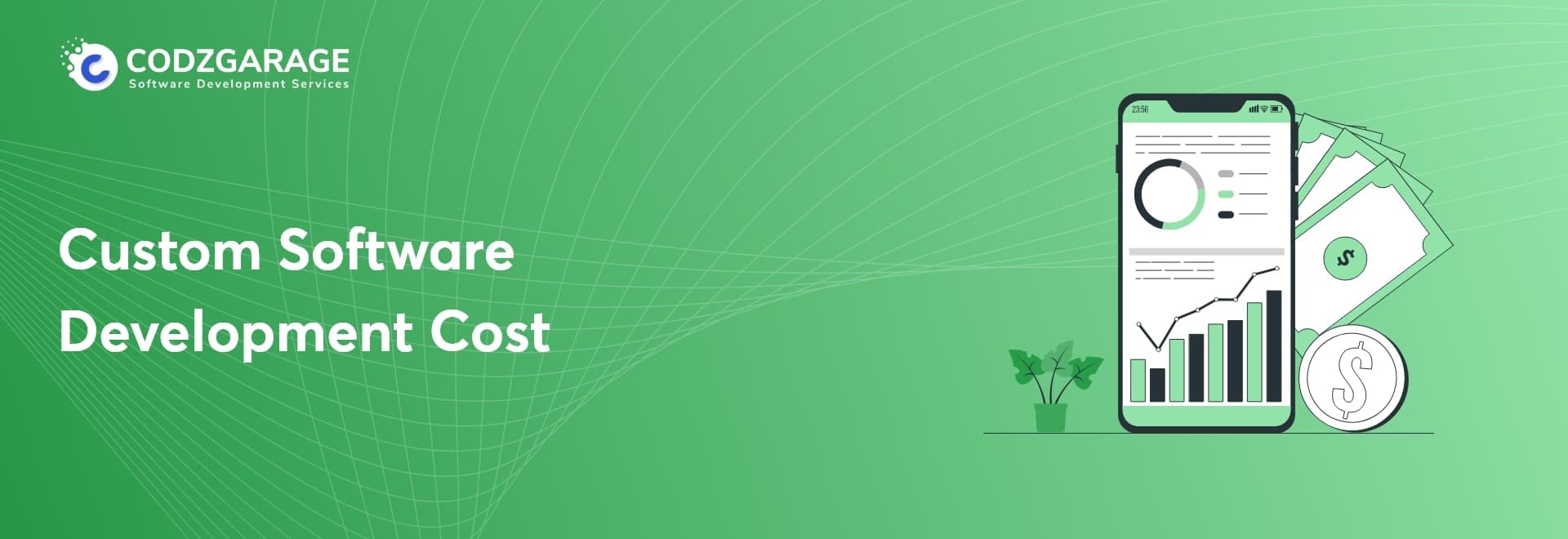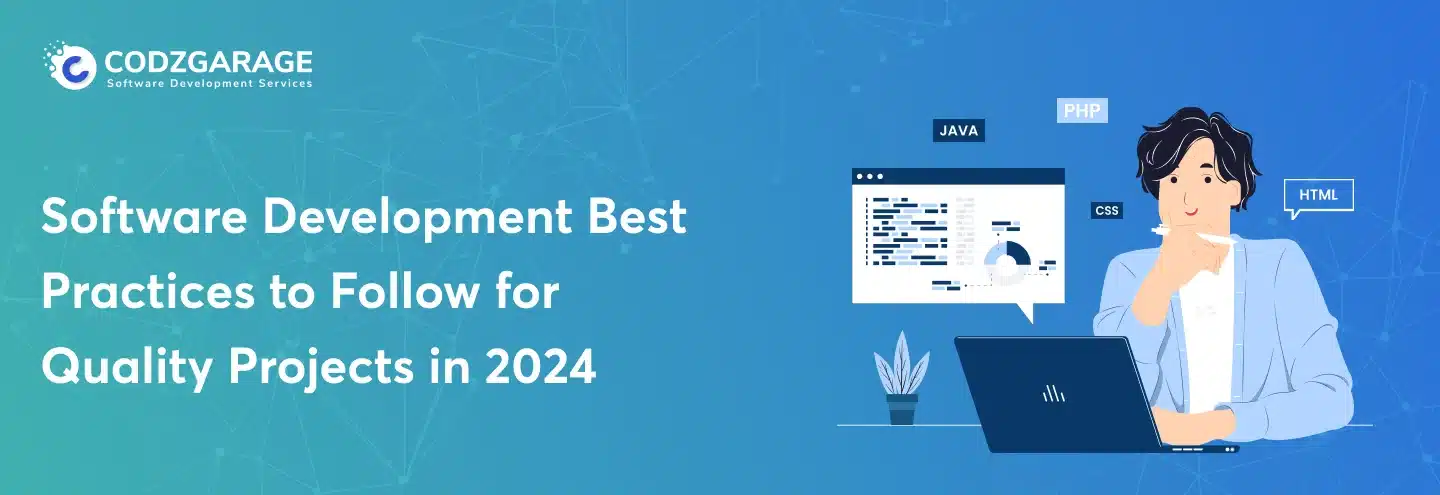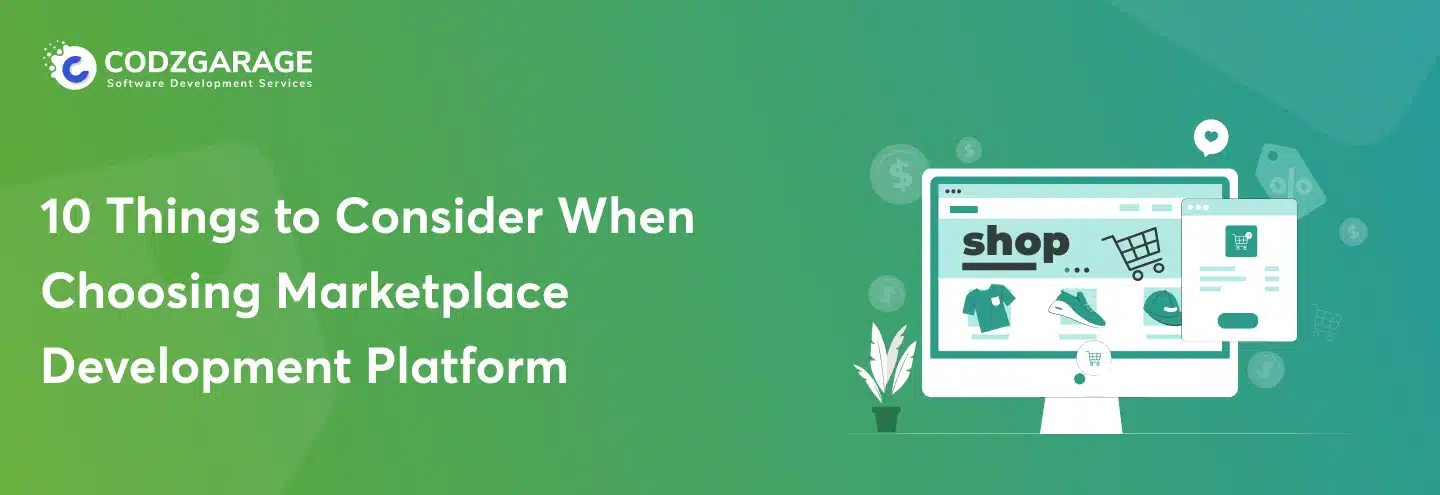Legacy System Modernization: Challenges and Solutions in a New Era of Digital Transformation
Employ one-of-a-class legacy system modernization practices which assist you in putting your application modernization no longer on the back burner!
Has the software in your company got obsolete? Do you need to modernize legacy systems? Are you feeling all at sea while determining a legacy application modernization approach? Whether your answer is affirmative for all of the above questions or any of them, this article is for you. It has got your back for complete guidance on the challenges and solutions to legacy system modernization.
Do you know?
- Ten federal government legacy applications cost around $337 million annually for maintenance. Furthermore, the cost continuously increases by 15% each year, according to the Government Accountability Office.
But what happens when you head up to software modernization with lack of know-how on software modernization strategy?
- More than 75% of modernization projects of legacy systems fail just because of not having an appropriate plan and strategy.
That’s where being aware of every single aspect of software modernization comes into play.
Codzgarage, bring one of a class desktop to web migration services provides end-to-end legacy application modernization services to facilitate your obstacles created by legacy systems. Connect us for further discussion!
By upgrading legacy systems, you can replace, re-architect, and re-create legacy software solutions that are obsolete now and fail to fulfill your needs. But, when you lack the appropriate knowledge or information, modernization is likely to become a roadblock in your modernization journey. Factoring in the importance, we, in this application modernization guide, have come up with a complete analysis of the challenges and solutions of legacy system modernization to ease your hassle.
Let’s explore intensively!
What’s a Legacy System?
Any sort of application, infrastructure, or process that’s obsolete and not competent in aligning with the current requirements of a business or marketplace deserves to be considered a legacy system. In general, hosted in a monolithic and strictly coupled environment, legacy applications run mostly on the hardware or software that’s hosted, customer-owned, or supported. However, legacy software does the function; they tend to impose a kind of burden in the guise of higher expense and hard-to-find IT talents for maintenance.
What’s Legacy System Modernization?
Legacy application modernization is the process that involves updating existing software in an organization to optimize it. When modernized, the software becomes competent in gaining operational efficiencies, addressing technology constraints, supporting adoption and integration with additional systems based on trending technologies, and meeting customers’ experiences and expectations.
Legacy software modernization begins when an organization finds it hard to maintain existing, obsolete, and expensive hardware and software, which is incapable of interoperating with current tech stacks and undertaking the tremendous task of taking benefits of best-fit and trending platforms.
There are several alternatives to legacy system modernization that you can choose from. An approach can be to refactor code utilizing migration tools to make the same system run with minimal changing of codes on modern infrastructure. In some circumstances, there are emulators available, enabling you to circumvent code alteration entirely. Another approach may be to complete-re architecting the application, replacing the legacy application using cloud native development tools.
What Are the Issues and Risks Associated with Legacy Software?
However, legacy software solutions are outdated that fail to meet your current and enhanced business requirements; they are still in use and perform a variety of operations. Here are some of the issues and obstacles that you may experience when using a legacy system.
- Outdated (UI) User Interface— Legacy applications are likely to have an outdated and clumsy user interface.
- Lacking Compatibility with Current Systems—Obsolete software tends to have lacking compatibility with modern software systems.
- Dependency on Outdated Technologies— An outdated system is reliant on outdated technologies, preventing you from leveraging modern tech capabilities.
- Slow Performance— Legacy systems may be clunky, hence, delivering a slow performance like slow loading time, long waiting for data to upload, and the like compared to modern software.
- Limited Support— Limiting assistance is another cause you’re likely to come across if you’re making use of a legacy system.
- Limited Functionality— Legacy software may experience tough times handling modern applications and data, resulting in mitigated productivity.
- Vulnerability Against Security— A legacy system may be vulnerable to modern security protocols and competencies to patch security flaws.
- Fails to Squeeze Competitive Advantage— Organizations using legacy applications tend to encounter hassle while adapting to new customers’ requirements, market trends, and the like, failing to squeeze competitive advantages.
- Potential Financial & Legal Risks— At times, a company needs to comply with specific regulations and standards. With a legacy system, an organization may fail to adhere to those regulations, leading to a fine or penalties on the company.
- Data silos— Typically not designed to merge with modern systems, legacy systems are likely to cause isolation from other systems, leading to data silos.
- It’s Tiring to Find Skilled Developers— As they’re old, legacy applications tend to require specific skills for maintenance, and the task of finding that dexterous and experienced developer may be maddening.
What are the Causes Keeping Organizations From Legacy System Modernization?
Once developed, software or application lasts for years, but because of the exponential evolution of technology, they get obsolete in just a short span of time. Because an organization has invested immensely in software creation, they tend to get a return by using the system even when it lacks functionality. Have a look at the pointers mentioned below to get the reasons, one or even more of which are likely to be the reasons why an organization uses a legacy system.
- The software meets some of the business’s needs or is a mission-critical application.
- The organization is experiencing a lack of IT skills or competent developers to modernize legacy systems.
- Legacy system modernization requires a wide range of resources, including money, time, human resources, and the like, that a company dares not to invest.
- The massive expense of legacy system creation hasn’t been compensated so far, and the organization can’t afford to make another investment that sooner.
- Eventually, the company lacks the desire to move towards legacy software modernization.
Challenges and Solutions of Legacy System Modernization
After a detailed exploration of many factors, including what’s legacy systems, what’s legacy application modernization, risks and issues, and causes preventing the modernization of an existing system, now is the time we should dive into the challenges and solutions of legacy software modernization! Let’s get started from the challenges, and end up with solutions!
Challenges of Legacy System Modernization
Although there are plenty of advantages to modernizing your legacy system, there are some drawbacks as well. Here are some of the challenges you may encounter while modernizing your existing outdated software.
Workflow Issues
Re-engineering a legacy system results in a mismatch between the workflow and the end user. This is one of the considerable issues when you migrate your existing system, and the users may find it difficult to understand and make use of this system. Therefore, you need to address it— as if not addressed properly, it’s likely to lead to poor employee engagement.
User Acceptance
Migration to a new system is typically met with resistance. It may be a tough task to get your workforce to adapt the new system to their day-to-day work routines and activities. Therefore, you need to focus on user acceptance while modernizing efforts are undertaken.
Data Loss
Legacy applications contain a significant amount of data that you need to convert to the new system. But, it’s not always possible that you successfully migrate all the existing data to the new platform. This is likely to result in huge data loss, hence, is one of the biggest challenges while legacy system modernization.
Problems in Strategy Creation
Knowing how to create an application modernization roadmap is one of the significant challenges involved with obsolete software modernization, which must be taken into consideration beforehand. As there are several ways to do it, you may find yourself all at sea while making or selecting the right strategy for your project.
Integration of New Applications & Technologies
The integration of the new technologies and applications with your existing legacy software infrastructure can be another issue associated with the modernization of your legacy application. You would need a huge amount of forethought, analysis, and planning to make sure the new application is compatible with the existing systems codes.
Cost of Modernization
Is the question “How much does it cost to migrate a legacy system to a modern platform” popping up in your mind, too? If it is, there’s nothing to worry about; it is obvious what happens to the best of us. The cost of replacing the entire existing legacy application isn’t a tiny affair but has a multitude of activities involved that might be expensive to conduct. Hence, the cost required is another challenge with legacy application modernization which needs to be taken into consideration before embarking on the project development.
Strategies and Standout Practices to Overcome Challenges Associated with Legacy Systems Modernization

In this exponentially evolving marketplace, modernizing a legacy system is essential for businesses thinking of being ahead of the curve. For that to be possible, you need to have an effective strategy in hand before you get started to work on it. Here are the solutions using which you can ease your legacy software modernization journey and grab the most out of it!
Analyze Your Legacy System
A proper assessment of your legacy application is the first step that must be taken into consideration beforehand. Even when you have a cutting-edge application, it, too, is likely to fail to meet your current business requirements. Therefore, you should review your existing application entirely and intensively, keeping your current as well as future business objectives in mind so that you can end up having the right plan in mind.
Make a Right Decision
Next up, consider taking an intense look at the current marketplace, ensuring you gauge all the current offerings/solutions in the market. Once you have the information about your current needs and the marketplace, you’re able to make the right decision toward legacy system modernization.
Select the Right Modernization Strategy
There are several strategies for software migration available out there into the marketplace that you can choose from. These strategies are enhancement & migration, code-refactoring, re-platforming, and software rebuilding. In order for you to make the right and appropriate decision, you will need a proper assessment of all these approaches. You better find assistance from a legacy software modernization company to help you with that.
Choose a Suitable Technology
The technology you choose to employ matters the most and has an immense significance on the performance of your project. That’s where you need to determine whether to go for complete migration or go with a hybrid model. Furthermore, you also have to consider the size of your organization, the method you choose to manage big data, along with the stack speed system you need. These will play a vital role in how you determine the tech stack you’ll be making use of for your software.
Set up a Schedule for Legacy System Retirement
You can’t replace your existing legacy system all of a sudden; hence, you would need to plan to roll out the newly migrated system in a specific period of time. Using this strategy not only enables you to mitigate the disruption or get a cost-effective solution but also gives you more time to plan to deal with the potential challenges relating to legacy application modernization.
Train Your Employees Properly
The training after software modernization is of utmost significance that you can’t overlook. However, your employees may be impassive about learning new software; you should make sure you’ve trained all of them. When you train your workforce, it helps you mitigate the potential indifference and make the workforce familiar with the new infrastructure.
Plan for Future Updates
Irrespective of your best efforts, the modernization is likely to disrupt the entire everyday workflow in your organization, and that would be expensive, too. Therefore, you’re advised to plan or have the budget set aside beforehand for future updates. By doing so, you’ll be able to streamline your process.
What are the Benefits of Legacy System Modernization?
Have a glance at the potential payoffs of modernizing your legacy system!
- Agility in Process— When you get your legacy system modernized, you fine-tune your software environment and enable it to integrate systems to optimize procedures, adapt business conditions in no time, react to seasonal fluctuations rapidly, leverage data across organizations, and so on. This results in a streamlined procedure.
- Efficiency in Operation— Modernizing your legacy system opens the door for efficient and flawless business operations. It offers faster time to market, enhanced performance, and a next level of internal along with external user experience.
- Mitigated Expense— When you modernize your existing software, you do away with monolithic applications, data center space, and physical servers, which mitigates the cost spent on software licensing.
Signing Off…….!
No company with obsolete software can go a long way when it comes to succeeding in this competitive marketplace. Hence, for organizations willing to remain ahead of the curve in the competition, legacy systems modernization is critical. In this article, we strive to provide you with an intensive analysis of the challenges and solutions involved with legacy software migration. Hopefully, this article will help you throughout your software modernization journey! Contact Us for a free consultation.
On the Lookout for Legacy System Modernization Services?
Looking for a custom software development company? Want to get a free quote?
Click to get a free quote in a heartbeat!FAQs
Why modernize legacy systems?
By modernizing legacy applications, you optimize your obsolete software to streamline operations, enhance customer experience and get increased revenue.
What are the key problems one may encounter while legacy systems modernization?
Legacy application modernization tends to have complexities, with enhanced costs that can cause data loss, user resistance, security risks, and the like. Hence, you need not only careful planning but also an effective execution of that to mitigate missteps and ensure a flawless software transition.
Why do legacy systems struggle to meet modern consumers’ needs?
Legacy systems, for instance, data warehouses, databases, and the like, offer featured business data but mostly don’t provide features that can align with the needs of today’s users. The cause for this is the rapidly evolving technologies that cause even a system not that old to be obsolete.
What are the common examples of legacy systems/legacy modernization examples?
The mainframe systems, old version operating systems including Windows 7, Windows XP, older database management systems, for instance, Oracle 9, or obsolete hardware like Intel 286, Apple IIGS, and so on are the perfect examples of legacy systems.
What are the limitations of legacy systems?
Legacy systems are efficient and familiar with the processes in an organization; however, there may be some problems with this, for instance, lacking opportunity for innovation and security. Furthermore, it may cause some more issues like compatibility issues with old systems, clunky and tough to use, and excessive expense on maintenance.
Why is it hard to replace legacy systems?
There are many issues that are likely to be preventing organizing from legacy software modernization. These can be, for instance, the fear of disruption, loss of compatibility, the cost of software modernization, and the like.
Looking
for Consultations?Our Expertise
- 8+ years of experience
- Adept developers
- Excel at Agile development
- Cost-effective





 Kevin Bhut
Kevin Bhut 







